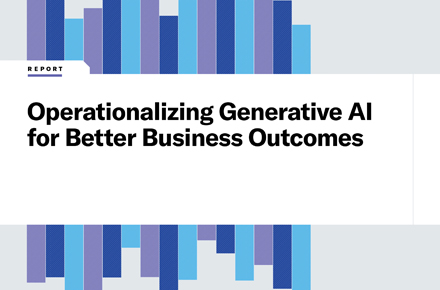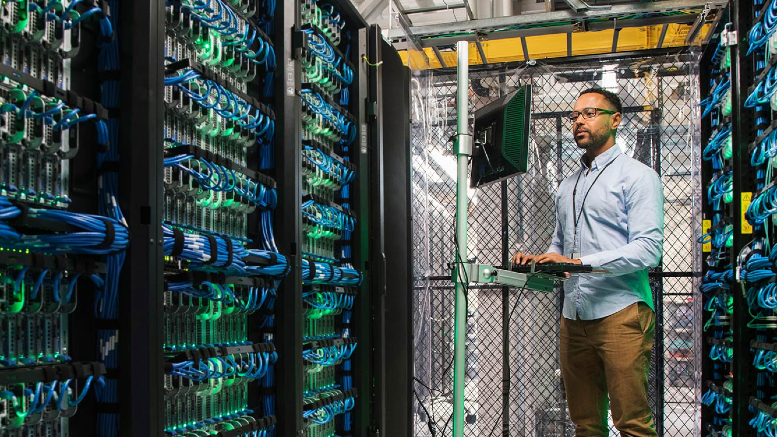Mine the untapped gold in your ITSM platform (Ep. 56)
[00:07-00:16 Weston Morris]
Welcome to the next episode of the Digital Workplace Deep Dive Podcast. I'm your host, Weston Morris.
[00:16-00:41 Weston Morris]
Well, if you've been involved with IT for any amount of time, you have been trained on the importance of having an ITSM platform, IT service management. What is that exactly? I mean, it's like if I'm a grocer and I'm trying to sell groceries, but I don't have cash registers. I don't have refrigerators. It's this necessary underlying infrastructure that makes it possible for you to do your business. We need that in IT. That's the ITSM platform.
[00:41-01:14 Weston Morris]
And I tell you, it's expensive. People could spend several millions over a four-year span in deploying an ITSM platform, maintaining it, upgrading it. This is who's licensing, maintenance, upgrades and things like that. And yet, I just saw a report from McKinsey that says 7 out of 10 IT projects do not achieve their expected ROI. So, this is kind of crazy. We spend all this money on this. We know we need it. And yet, there's a potential of us not achieving our ROI.
[01:14-01:37 Weston Morris]
So, I'm super thrilled to have my guest today, Nitya Mudaliyar, who is our solution manager focusing on our Enterprise Service Management, which includes ITSM, to kind of pick her brain and find out what are some tips that we can get? You know, the absolute best use out of our ITSM platforms and ESM services. So, welcome to the podcast, Nitya.
[01:37-02:17 Nitya Mudaliar]
Thank you, Weston, for having me. I wanted to walk through some of the ITIL processes, which form the backbone of the IT infrastructure of our business, in any enterprise business. For example, service desks, we need to be able to track our tickets, provide a knowledge base that is correct and up to date. We need to manage our endpoint, our assets, make sure they have the right software for our smartphones, printers. We need to
know if we have our kiosks, lockers and other point solutions that come in the IT infrastructure.
[02:17-02:43 Nitya Mudaliar]
Whether they have the up-to-date software, you need to know all that information. We need to make sure change management is conducted properly, like if we are able to make any change on one of the things, how does that affect downwards? Is there any kind of issue happening somewhere else? All these form a basis of items, which are very important as part of our ITSM solution.
[02:43-03:10 Weston Morris]
It's kind of like the grocery store, right? This is what makes it possible for us to do IT. It's this underlying infrastructure, and I think people can relate to these things. We talk a lot about service desk and asset management and device management, those sorts of things. So, let's just imagine, Nitya, that I'm a CIO and I'm saying, we really do not have a robust ITSM platform in place and processes. We've got a bunch of different tools we're doing this with.
[03:10-03:24 Weston Morris]
I'm going to go to the CFO, the CEO, I'm going to spend several million on implementing this. I can guarantee you the CEO and the CFO are going to ask the question: OK, great. I see you want to do that, what's the ROI to our business? Can you help with that?
[03:24-04:00 Nitya Mudaliar]
Definitely. There are several areas. I can mainly name four: knowledge, because we need to reduce the time to fix a problem if they have the correct knowledge and the correct, curated knowledge available to them. And then we need asset management, because we need to know what the cost of this PC is. How much are we spending? Even bigger costs can be the software license because sometimes we spend so much on license cost that we don't actually need or we have overspent, and we have a compliance issue with the vendor.
[04:00-04:27 Nitya Mudaliar]
Then change management is very important. As I said, all these IT infrastructures are connected to each other. Any kind of change in one could, if it's not managed correctly,
could have an adverse effect on the other and cause further delays and disruptions in our environment. And most importantly, we want to have a consistent employee experience because keeping them happy and productive is key for the business.
[04:27-04:48 Weston Morris]
So, I think the CEO or the CFO will probably recognize all of these as being real problems and things that, yeah, should be fixed. If you deploy a patch, you don't want to crash a bunch of things. If you're paying for licenses, you want to make sure they're actually being used. So, I think the real question is, will we actually achieve an ROI by deploying this?
[04:48-05:10 Nitya Mudaliar]
Well, it's good that you asked this question because there is, yes, an expectation that we are able to save tens and thousands or sometimes even millions of dollars annually as part of these implementations or even enable new revenue. But sadly, or unfortunately, not many achieve this. In fact, 50% of these implementations fail.
[05:10-05:35 Weston Morris]
Well, Nitya, I guess the key question here is I'm thinking: if it is challenging at best to achieve an ROI, I would say not just with an ITSM platform rollout, but pretty much any major IT project today with the success rate being so low, what are some of the pitfalls that you've seen that people make that prevent them from getting ROI that maybe our listeners can avoid in their rollout of an ITSM platform?
[05:35-05:55 Nitya Mudaliar]
The problem here is most enterprises, they start with the tool and then they try to solve the business problem. You have to start the other way around. We start with the business problem. Forget the tool, forget the tool set. What are you trying to achieve?
[05:55-06:47 Nitya Mudaliar]
What is the end goal over here? Are you trying to save money? OK, but are you trying to enable some function of the business? Say you're trying to make doughnuts, and your doughnuts machine needs to work. If that's your end goal, your ESM solution should be tuned to work with that. And that is the pitfall I've seen many times, but people don't really look at from the top down, but from the tool itself. Hey, this is the tool I've chosen. Let's
look at the capabilities and start implementing them without thought, without an understanding of what you're trying to achieve by implementing that. So, that is the major pitfall that I have seen in the industry, why these ITSM projects fail.
[06:47-06:57 Weston Morris]
I think a lot of this goes back to maybe the problem in selecting an ITSM platform vendor. Is that right?
[06:57-07:15 Nitya Mudaliar]
You have used the wrong word here. Vendor. It is that relationship you have with your ESM provider that you are at risk. My recommendation is to treat the vendor as a partner where they have a vested interest in the responsibility of your success.
[07:15-07:34 Nitya Mudaliar]
Going further, it would be great to set expectations with your ESM partner that really supports us. Hey, support us so that we will be willing to be that spokesperson and advocate or reference on how to best use your platform so that we get business success. So, that's the key.
[07:34-08:05 Weston Morris]
Got you. I really appreciate the first point you mentioned there especially. I mean, stop thinking about it as a vendor and think about it as a partner. I think that ties with the first point that normally in IT, we think about fixing IT problems, but you're asking us to take a step back and really look at the business, work together with our business leaders, the CFO, CEO, or other senior leaders and ask how can this ITSM platform and the services we're enabling here, how can they actually enable the business? I'd love to hear some examples. Could you give me any?
[08:05-08:36 Nitya Mudaliar]
Absolutely. So, looking beyond IT is key here. We can consolidate multiple tools, we can achieve cost savings by reducing complexities, these are just a few examples. But as far as use cases are concerned, you can think about HR services, facilities management, customer service management and then we have industry specific solutions which we
could cater to – say public sector, public sector digital services, healthcare, just to name a few.
[08:36-08:52 Weston Morris]
Maybe we could focus on the first one you mentioned there because I mean that's going to apply to any industry. Everybody has HR, and if there's a way of bringing HR and IT to the CHRO and the CIO together, how can a robust ITSM platform and services make that possible?
[08:52-09:31 Nitya Mudaliar]
Absolutely. One of our customers is a poster child for this particular journey that we took them on. This particular customer is a global commercial real estate customer. And what we did – they already had a robust ITSM platform, they had already implemented the ITSM modules like incident, problem, change, request, knowledge. So that was a full-fledged implementation, and they really like the platform, and they were doing HR services in another two or three disparate tools.
[09:31-09:58 Nitya Mudaliar]
And that's when we were able to reach out to the CHRO and that group to see how we could help them with tool consolidation because these platforms are best used, as I said, not just as a point solution but as a platform itself for tool consolidation. So, this is how we approached it, and we were able to implement many use cases for this customer.
[09:58-10:33 Nitya Mudaliar]
Like onboarding, billing inquiries like if their employees have some billing information that they want to request, payroll inquiries also was part of it because as you know we all have questions about our paychecks. Many of them employed third-party contractors in their business, and they had billing related questions. This used to happen through emails and very clunky experiences. They had very bad experiences. They used to take weeks and sometimes months to get back to them.
[10:33-10:58 Nitya Mudaliar]
Right now, they have a front-end form. They have access to that form. They have a streamlined workflow at the back end supporting this, and they are able to get back to
these requests within two weeks and complete them within two weeks, in fact. So that is how streamlined that experience is for not just their own employees, but also third-party contractors, and that's a big win.
[10:58-11:36 Nitya Mudaliar]
Also, with this particular customer we took it to the next level. We have recently implemented an HR assist pilot. Now what does that mean? It's a GenAI solution where we are trying to add a GenAI solution and helping the HR services agent, helping them with case summarization, response generation, case deflection, just to name a few. So, we're taking this customer from ITSM to HR to GenAI. So, we are really taking this customer through that journey, and the customer is really seeing a lot of value in investing in this platform.
[11:36-12:08 Weston Morris]
Yeah, Nitya, I'm really impressed that you're able to help, not only with captive employee onboarding, but also contractors as well, which is a totally different process and is often problematic. That's really cool. You know, when you're describing this, it reminds me about us here at Unisys, field services is a super important part of our business, and I know there's been a lot of effort in taking full advantage of ITSM platforms to be able to make sure that our services to our customers are being met. Can you expand on that a little bit?
[12:08-12:37 Nitya Mudaliar]
Absolutely. You rightly mentioned that we have a big field service operation within Unisys, and we have taken a big step towards modernization of our tools, tool consolidation. So, we were using a lot of disparate tool sets for managing our global workforce, parts management, scheduling, task management, just some of the very few functions that I've mentioned of field services. As you know, field services are so complex.
[12:37-13:09 Nitya Mudaliar]
All of that has been implemented with our ESM platform. In fact, we give an Uber kind of an experience to our customers where we are able to track our field tech on the maps. We're able to get proactive notifications on SMS, WhatsApp, that kind of end-to-end user experience, not just for the customer, the field tech as well as the business owner, so that is like a full holistic FSM implementation that we have undertaken within Unisys.
[13:09-13:31 Weston Morris]
Nice. Nice. Now I think we have time maybe to squeeze in maybe one more example if you don't mind, Nitya. You mentioned healthcare is another area where there's specific business problems and maybe the ITSM platform – really, we should be calling it an ESM platform, enterprise service management, not just ITSM – how could an ESM platform like that help in the healthcare space?
[13:31-14:35 Nitya Mudaliar]
Yes, absolutely. Healthcare is a very wide field as you know, and one of the major requests or requirements in healthcare organizations is a lot of regulatory compliance. They have a lot of regulation compliance needs. One of them is HIPAA, as everyone knows, but there are many such needs that they have. And most of these solutions actually can be catered to that kind of a requirement. We can make sure those are governance, so we can provide streamlined customer service for this particular healthcare customer, a back and a joint pain management healthcare organization, and they were able to use this existing ESM platform for providing an omnichannel customer service for their customers and also streamline operations and workflows for their employees through ensuring HIPAA compliance. So that is very key over here.
[14:35-14:55 Weston Morris]
Well, I'd like to maybe just recap what I've heard here, because there's a lot to absorb here. So, one of the key takeaways I'm hearing is if I'm a CIO, obviously I'm thinking about IT problems and that is what you would deploy an ITSM platform to help address, incident management, change management and so on.
[14:55-15:22 Weston Morris]
But I think that the main takeaway here is stop thinking about your ITSM platform as just IT. In fact, that's why we should say ESM – enterprise service management. Think about it as a platform that enables my business. Have a conversation with my business partners to see what are the unique needs and challenges they're facing, whether it's healthcare, whether it's airline, transportation, finance. They all have specific needs, and you even mentioned HR onboarding.
[15:22-15:34 Weston Morris]
How can this platform help with the processes, the workflow, the data sharing, and I think I love the example there with healthcare because there are a lot of privacy and data-specific challenges that need to be addressed there as well.
[15:34-15:51 Weston Morris]
I think that's the main takeaway. Now, Nitya, maybe to close out here, if we can, I can have you look into the future just a little bit. What are some of the changes we can expect to see in the near future with an ITSM or ESM platform going forward?
[15:51-16:08 Nitya Mudaliar]
Well, on the tech front, I can always tell that these three things – AI, agentic AI, and automation – are going to be the mantra out there. I think not just here, but in every technological forefront and industry.
[16:08-17:00 Nitya Mudaliar]
But think about it. In today's world, how do you interact for any kind of a service, right? You interact through a form and a workflow gets kicked off at the back end, right? What I see in the future is we can talk to a bot and tell it what we need. "I need a data report on how many cases of measles there are in my state." Just throwing it out there. I need a report, and I just write that down. I don't even fill out a form, and I get that report. You can schedule that report. You can ask it to send that report to an email. That's what I see as the future. The next generation of the ESM platform is going to totally change how we do business.
[17:00-17:22 Weston Morris]
I could see that. Well, Nitya, I just absolutely love that you're able to carve out some time and share your tips and suggestions. I mean, it really is important that if we invest in an ITSM or ESM platform that we get an ROI, and you've given us several excellent suggestions here. The key is working together – IT and the business. But thank you again so much for the time you shared with us today, Nitya.
[17:22-17:26 Nitya Mudaliar]
Thank you for having me here, Weston. It was a pleasure.
[17:26-17:38 Weston Morris]
Well, folks, that wraps up another episode of the Digital Workplace Deep Dive podcast. I'm your host, Weston Morris. Thanks for listening.




















